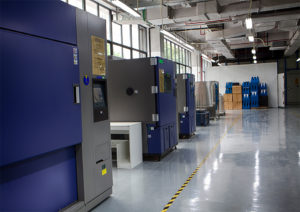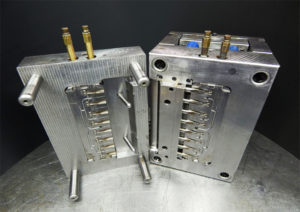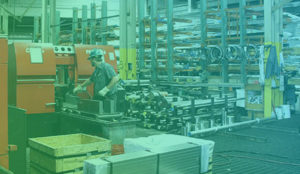Facebook
Twitter
LinkedIn
Having your prototype eventually manufactured and on the market is an arduous journey that requires a substantial amount of work. Along the way, there are many reasons why startups fail this journey and this is due to numerous reasons. However, let’s take a look at what it takes to get your prototype to where you need it to be.
You had an idea, it is now a reality. You have conquered the first stages of creating the necessary design files (Gerber, CAD, BOM, Schematics, PCB layout, etc…) and have found the right place to develop your first prototype. Now, what happens from here?
Many founders assume that once their prototype’s finished, that is the end, why not start manufacturing? Because it’s just a prototype! If we used a scale between 1 – 10 with 1 being the idea, and 10 being the market, you are on a 3. To get you to that 10 requires A LOT more work.
A prototype is nothing more than a validation point. You’re validating your hypothesis of, does it work? Is it functioning the way it needs to? Are people interested in what you’ve built? This is what a prototype is, it is an entry point to the market, a first glimpse at what is to come. Don’t mistake a prototype as close to complete.
EVT is the bottleneck stage of development. You will usually spend over 4+ months on your EVT. During the validation testing, you’re testing the design of the schematics, ME (CAD), and firmware, and creating a test plan for all these aspects. You’re also validating the key parts such as, selected screens, keyboards, batteries, cameras, etc.. to ensure they are suitable for your desired features.
On average you will produce your first five samples to validate the functionality of the product. This will consist of field testing. Seeing how they act in a real-life environment. For example, if your product is a sport related device which requires instant feedback from the sensors, the field testing engineers are able to determine if there are any issues with either, the feedback speed/strength, and/or the product itself in terms of functionality.
However, If your product fails any part of the EVT stage, then the engineer should recognize where the failure lies. For example, a product which is supposed to be sending data to and from one another is not receiving the way it should be during the field testing phase. Then the product needs to be either de-bugged (as it is a connectivity problem) or re-designed. The engineer should be able to discover the root course of the problems and fix them/it.
Majority of the time a product will encounter problems during the EVT stage, as this is what it’s designed to do. EVT is there to seek out all the problems with the current product and provide solutions. If your product fails at this stage it is not a major setback, but rather an opportunity to improve your product.
You have finally passed the EVT testing and validating stage. The DVT stage is now testing the design of the product. This should take up to 2 – 4 months. Put simply DVT is ‘cleaning up’ the product’s design and pushing the project one step further towards manufacturing.
In the EVT stage, you would’ve produced the first five samples using soft molds and CNC parts (as it is expensive to produce). At the DVT stage, you will begin building your molds and tooling ready for production. Your mold is ultimately producing the encasing material in and around your product.
At this stage your product is coming to the end of its development life-cycle, usually, PVT takes up to 2 months. This stage you’re running your first small-batch production run usually about 100+ units. This is to measure the success/quality rate of that amount of units. Hence, if you’re seeing a 10% failure rate (10 units aren’t working) then this needs to be investigated before mass manufacturing begins. If the failure rate is 1% and below, then this can be deemed as acceptable and can move onto the final stage, 1st Mass Production (MP1).
During your DVT stage the factory lines would have produced something called an SOP (Standard Operation Procedure). This SOP is a guideline for the factory workers to follow to ensure your product is being manufactured in the correct way. This ensures your product is identical throughout, whilst also maintaining high quality.
Over the course of your product’s development, there are will be an engineer called an ‘NPI engineer’. NPI stands for New Product Introduction, an NPI’s main responsibility is to overlook the development process through to manufacturing. Once you’re at the MP1 stage the NPI engineer is the point of reference to oversee a smooth transition into manufacturing. He/she will overlook and handle the product’s production.
In the beginning
Engineering Validation Testing (EVT)
 Shenzhen Valley Venture’s Environmental Facility – China
Shenzhen Valley Venture’s Environmental Facility – China
Your product will also go through In-lab environmental testing which follows a universal pattern (depending on your project) which consists of, waterproof testing, drop testing (usually 1.2 meters), dust-proof testing, needle flame, and glow wire testing (important for certification), thermal shock, and EMC testing. These are just a few tests that your product will encounter throughout the EVT stage.At our store, we invite you to unleash your vaping potential with the iGet Legend, a product designed for both seasoned vapers and newcomers alike. The iget legends offers an exceptional experience, combining sleek design with powerful performance. Whether you’re looking to explore new flavors or enjoy a smooth, satisfying vape, this device caters to all preferences. Join our vibrant community of vaping enthusiasts and elevate your experience with the iGet Legends today! If your product passes all these tests with flying colors congratulations! Passing the EVT stage is generally the most extensive hump to pass. This symbolizes a vital milestone in your product’s journey and is then ready to move onto the second validation stage which is design validation testing (DVT).
Failed EVT Stage
Design Validation Testing (DVT)
Molding and tooling
 Molds used for injection molding – China
Molds used for injection molding – China
Once the molding and tooling are complete you will begin a factory trial, commonly known as a design for assembly (DFA). This is the first glimpse into how your product is going to be manufactured. It is also designed to determine if there are any issues throughout the manufacturing process. For example, if your product requires any extra tooling or special requirements before mass production this is where the changes will be made. Now you’ve manufactured a small batch of twenty units (depending on your product) and you come across issues on the manufacturing lines. You then need to run a diagnostic to determine where this problem occurs, and why? Usually, an extra step needs to take place during production, or a key part needs to be better handled. With these 20+ units, you will also run more environmental testing to determine they are still functioning correctly. These tests are just like in the EVT stage however, will be more rigorous. You are also testing that the molds and tooling are not causing any issues. But, in extreme circumstances, some things do slip through the EVT net and can cause major defects during/after production. In this case, your product needs to go back through the EVT process again if it cannot be solved. If your product successfully passes this stage and is functioning the way you want it to, then it moves onto product validation testing.





